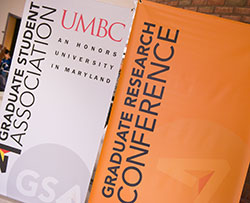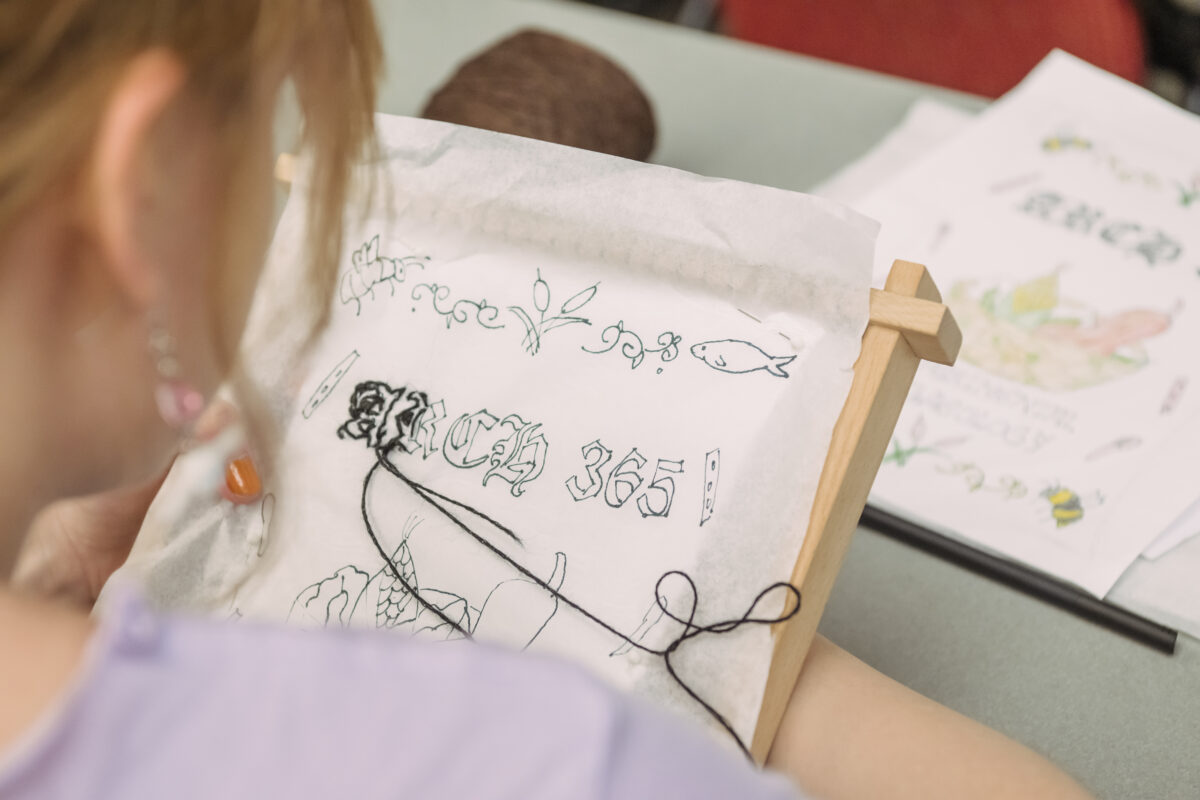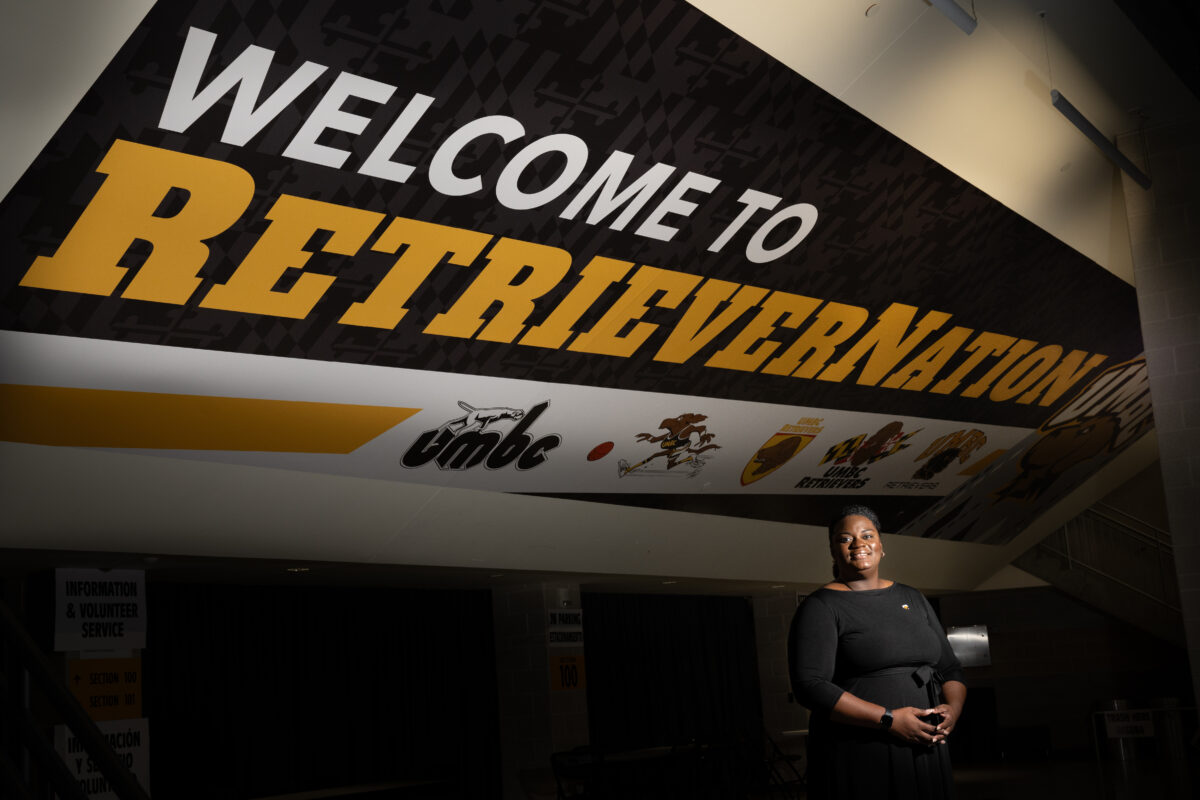Community, Collaboration, Career
Reimagined UMBC Graduate Research Conference focuses on unique professional development opportunities.
For the past year a dedicated team of graduate students has been carefully retooling UMBCs annual Graduate Research Conference (GRC). Their hard work and creativity paid off on March 25, 2015 when the largest-ever group of conference participants gathered to celebrate and promote student research, interdisciplinary collaboration, and diverse career paths.
UMBCs Graduate Student Association (GSA), GSA Senate, and Office of Graduate Student Life (OGSL) together hosted this day-long event. GSA Vice President and GRC Chair Romy Hübler ’15, Ph.D., Language, Literacy, and Culture, shares, The whole idea of the redesign was to make it more collaborative, more interdisciplinary a way to build community, not just among graduate students, but also faculty, staff and undergraduates.
The reimagined conference attracted 140 presentersmore than double the number that participated last year. Oral and poster presentations came from a variety of disciplines, and for the first time included Artist Talks and Works in Progress. Janet Rutledge, vice provost and dean of the Graduate School, shared, Im really excited about the inclusiveness of the new format of the conference, which allows graduate students at all stages of research to have an opportunity to present their work.
Jaclin Paul 17, intermedia and digital arts, shared her project First Contact, which uses twelve digitally altered images of American Girl dolls to explore themes of cultural identity in Colonial America. Paul explained: In creating First Contact, I wanted to engage conversation about [indigenous identity], the nature of the colonialism, and subverting the traditional cultural assimilation hierarchy.
Ann Kellogg, a Ph.D. student in public policy, presented Collaborating for Success: The UMBC Student Success Network. This ongoing project examines formal and informal relationships across campus that shape the networks and resources impacting student progress toward graduation. We continue to push out rules and regulations at the state and federal level, but if we dont understand how they diffuse across a campus and how they are adapted to local practices, I think its hard to make effective policy, Kellogg shared.
Cailing Dong, a Ph.D. student in information systems, presented Predicting Behavior on Online Social Networks. The goal of her work was to create a decision-making model for social media consumers to assist them in protecting their privacy online. Through her research, Dong observed what she calls a privacy paradoxa disconnection between users intention of privacy protection and their actual privacy activity. She explains, Even if a person claims that they have a high level of privacy, when it comes to sharing some information on social networks, you really share more than is intended.
Kayla Lemons, a Ph.D. student in biological sciences, examined the system in mice responsible for detecting odors to determine how exposure to harmful pollutants and irritants may affect cells that contribute to long-term sensory capabilities. Its important for this system to be able to maintain function on a long-term basis for animals like mice who need to detect predators and mates, Lemons asserted.
Beyond welcoming a broader range of research presentations, the redesigned GRC also included professional development workshops on industry and non-profit/government hosted by the Career Center and an entrepreneurial careers workshop hosted by the Alex. Brown Center for Entrepreneurship.
Renetta Tull, associate vice provost for graduate student development and postdoctoral affairs, described this new aspect of the conference as addressing a key issue that the Council of Graduate Schools identified in their report, Pathways through Graduate School and into Careers, which notes that students need to have a broad view of career options.
This year, a highly interdisciplinary keynote panel replaced the usual keynote speech, bringing together faculty from the Erickson School; chemical, biochemical and environmental engineering; and American studies. The GRC planning team also offered a resource-rich research fair and, to foster collaboration, added a closing reception for students, faculty, and staff to share ideas and reflect on presentations.
Planning for next years conference is already underway, with the committee exploring new opportunities for student-led workshops, roundtable discussions, and, as Hübler describes, making the most of this opportunity to build community and make connections.
For a complete list of presentations and to learn more about the 2015 conference, see the GRC website.
(03/27/2015)
© University of Maryland, Baltimore County 1000 Hilltop Circle, Baltimore, MD 21250 410-455-1000




